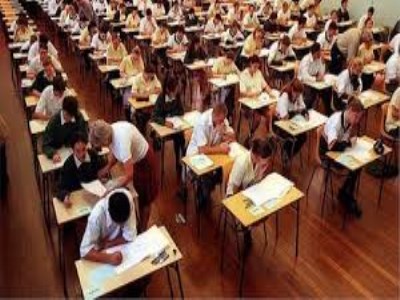
Today ACARA released the preliminary summary results of the 2017 National Assessment Program – Literacy and Numeracy (NAPLAN) tests.
On the whole, student outcomes have shown only marginal improvement since the tests were introduced a decade ago.
Reading and numeracy scores across the country increased by just 0.72% and 0.81% respectively since last year, while a decrease of -0.55% was seen in in writing scores.
Longer-term trends since the beginning of the test in 2008 show a 3.52% improvement in reading and a 2.55% increase in numeracy,
ACARA CEO, Robert Randall, said that despite the decline in writing, the overall results represented a “positive trend”.
“Importantly, there has been a gradual redistribution of students from lower bands of achievement to higher ones, particularly in some domains and year levels, such as Year 3 reading,” he said.
“In other areas, this improvement has not always been great enough to significantly impact average national results, but it is a positive trend”.
The data also showed that Year 3 reading results continue to show sustained improvement, with the ACT, Victoria and NSW continuing to have high mean achievement across all domains.
Increases were seen in mean achievement in the Northern Territory in primary years reading and numeracy since 2008, while the WA and Queensland had the largest growth in mean achievement across most domains since 2008.
The percentage of students meeting the national minimum standard also remains high – over 90% nationally and in most states and territories, across all domains and year levels.
Federal Education Minister, Simon Birmingham, called results a “mixed bag”.
“The results show that while we have excellent schools and teachers in Australia, we need to focus on what will give our students the opportunities they need to reach their potential,” Birmingham said.
“Some of the longer-term trends highlight great advances in areas of reading, writing and numeracy but we need to be aiming for more consistent improvements,” Birmingham said.
Birmingham said this means looking at what can be learned from Australia’s high-achieving schools and what they do that can apply in other schools.
Laureate Professor, John Hattie, pointed to a range of factors that contributed to the results, but said the new HSC Minimum Standard can help focus school-wide efforts to ensure these improvements are sustained.
“The HSC Minimum Standard will help focus teaching and learning from early childhood to Year 12 to ensure all their students have the literacy and numeracy skills for success in life,” he said.
“Looking at the national picture, the ten-year data indicates that positive change in student performance is happening gradually, which will impact national results if it can be repeated across domains and jurisdictions”.
Professor Hattie added that school communities across Australia, including NSW, should be recognised as the performances demonstrate the collective efforts of teachers, students and parents in responding to the challenge of improving literacy and numeracy outcomes.
“Literacy and numeracy skills are the key to educational attainment. These are the foundations on which students build to develop more complex skills, which empower them to fully participate in work and life after leaving school,” he said.
“What we must continue to do is support teachers – supporting the quality and capacity of those at the front of the class to make an impact on student learning across the board.”


